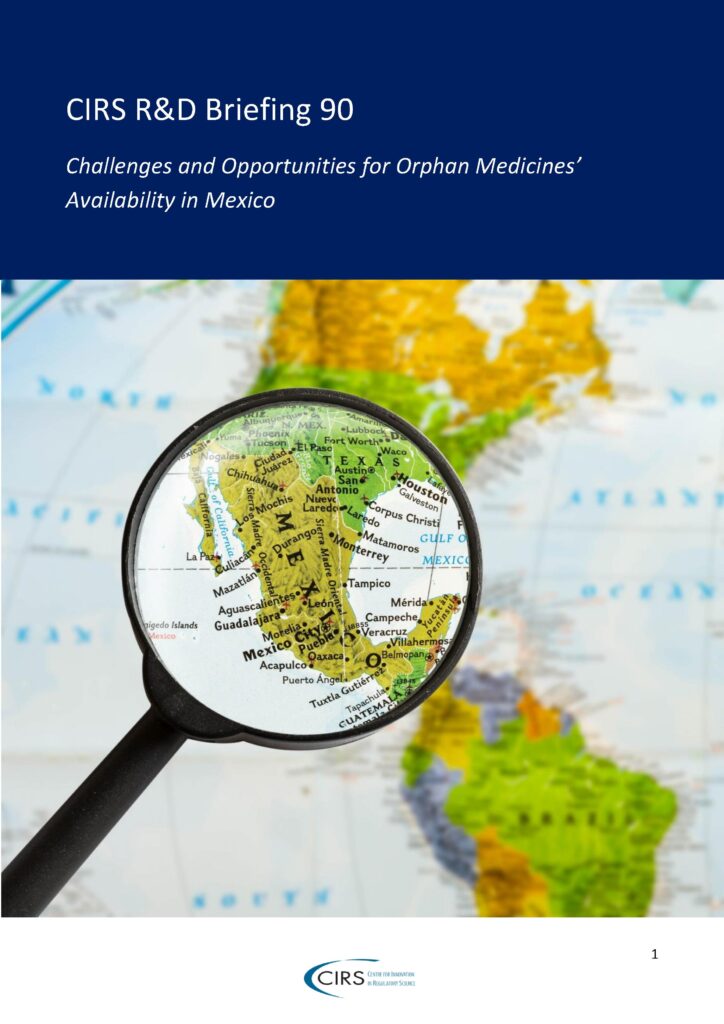The document ‘Estrategia sobre Certidumbre Regulatoria para el Sector Farmacéutico’ (Strategy of Regulatory Certitude for the Pharmaceutical Sector), published last January by COFEPRIS describes important working projects the agency will support from 2022 to 2030 to alleviate regulatory obstacles affecting therapeutics access for the Mexican population.
Among these, the strategy stresses the importance for COFEPRIS to comply with their commitments to international regulatory standards, including those promulgated by the ICH and PIC/S to benefit from increasing regulatory harmonisation and regulatory reliance, especially for biologic therapeutics. This includes advancing with the implementation of Good Regulatory Practices and the parameters of the WHO Global Benchmarking Tool.
Considering this recently published strategy, this CIRS R&D Briefing brings attention to a particular group of therapeutics, orphan drugs, which are designed to help patients affected by rare diseases and how their availability can be optimised for the Mexican population. Based on estimates by the Mexican ministry of health and the World Economic Forum (WEF), orphan diseases affect from 8 to 13 million Mexicans.
Around the world, availability of and access to orphan products is a complex and multifactor phenomenon. These therapeutics are designed to address diseases that each have a very low incidence in the general population. Typically, these drugs address serious conditions with high unmet medical needs where there are few therapeutic alternatives. These products result from complicated discovery programmes, require sophisticated manufacturing facilities, challenging clinical development programmes, and special expertise to develop. The availability of these products, however, is made even more challenging when there is a lack of a clear and detailed regulatory pathway to facilitate the registration and availability of these unique therapeutics.
This R&D Briefing focuses on how therapeutic options for orphan diseases in Mexico face barriers to their availability and presents opportunities to optimise the regulatory environment. Please note the work for this Briefing was undertaken in 2021-2022.

